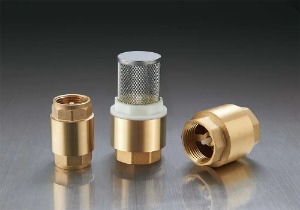2025-07-18
Brass check valves are widely used components in fluid control systems, serving the crucial function of allowing flow in one direction while preventing backflow. Their reliability, durability, and corrosion resistance make them popular in plumbing, heating, and industrial applications. The performance of brass check valves heavily depends on the materials used in their construction.

Copper Content: Copper usually makes up around 60-70% of the alloy. It provides corrosion resistance, particularly against water and various chemicals, which is vital for valve longevity.
Zinc Content: Zinc, typically 30-40%, adds strength and hardness to the alloy, enhancing durability while maintaining ease of machining.
Additional Elements: Small amounts of lead, tin, or nickel may be added to improve machinability, wear resistance, or corrosion properties.
Brass's ability to withstand diverse environmental conditions makes it the preferred material for valve bodies, ensuring robustness and a long service life.
A brass check valve comprises several components, each selected for specific material properties to optimize the valve's performance.
1. Valve Body
The valve body is the main structure that houses the internal parts and withstands the fluid pressure. It is almost exclusively made from brass because:
It resists corrosion from water, steam, oils, and mild chemicals.
It offers good mechanical strength to handle system pressures.
It is cost-effective and easy to manufacture into complex shapes.
The brass body is usually cast or forged, depending on size and application requirements.
2. Internal Moving Parts
Inside the valve, the moving parts include the disc, seat, and spring (if present). Their materials vary to balance sealing performance, wear resistance, and corrosion protection.
Disc: The disc or valve plate blocks reverse flow. It is often made from brass or stainless steel. Stainless steel is sometimes preferred for its corrosion resistance and strength, especially in aggressive environments.
Seat: The valve seat forms a seal with the disc to prevent backflow. Seats may be made from brass or incorporate softer materials like rubber or PTFE (Teflon) to improve sealing and reduce wear.
Spring: In spring-loaded check valves, the spring is typically made of stainless steel to provide consistent tension and resist corrosion.
The selection of these materials is critical for ensuring tight sealing and reliable operation under varying pressures and temperatures.
To enhance durability and performance, brass check valve components often undergo surface treatments or coatings.
Nickel or Chrome Plating: Some valve bodies or internal parts receive plating to improve surface hardness and corrosion resistance.
Passivation: This chemical treatment removes free iron and enhances corrosion resistance, especially in stainless steel components.
Polishing: Smooth surfaces reduce friction between moving parts, wear and ensuring consistent sealing.
These treatments extend valve life and maintain functionality in demanding environments.
Seals and gaskets are essential for preventing leaks and ensuring airtight closure. Their materials must resist chemical attack and maintain flexibility over a wide temperature range.
Rubber (NBR, EPDM): Commonly used for their elasticity and sealing capability, suitable for water, oils, and mild chemicals.
PTFE (Teflon): Offers chemical resistance and low friction, ideal for more aggressive fluids.
Viton: Used where higher temperature and chemical resistance are needed.
The choice of sealing materials depends on the valve's application and operating conditions.
Environmental and Application Considerations
The materials chosen for brass check valves must align with the specific fluid type, temperature, and pressure conditions.
For potable water systems, materials must be lead-free or meet strict regulatory standards.
In industrial applications with chemicals or higher temperatures, stainless steel internals or specialized seal materials may be required.
Marine or outdoor environments benefit from enhanced corrosion-resistant coatings or materials.
These considerations ensure safe and efficient valve performance tailored to each use case.